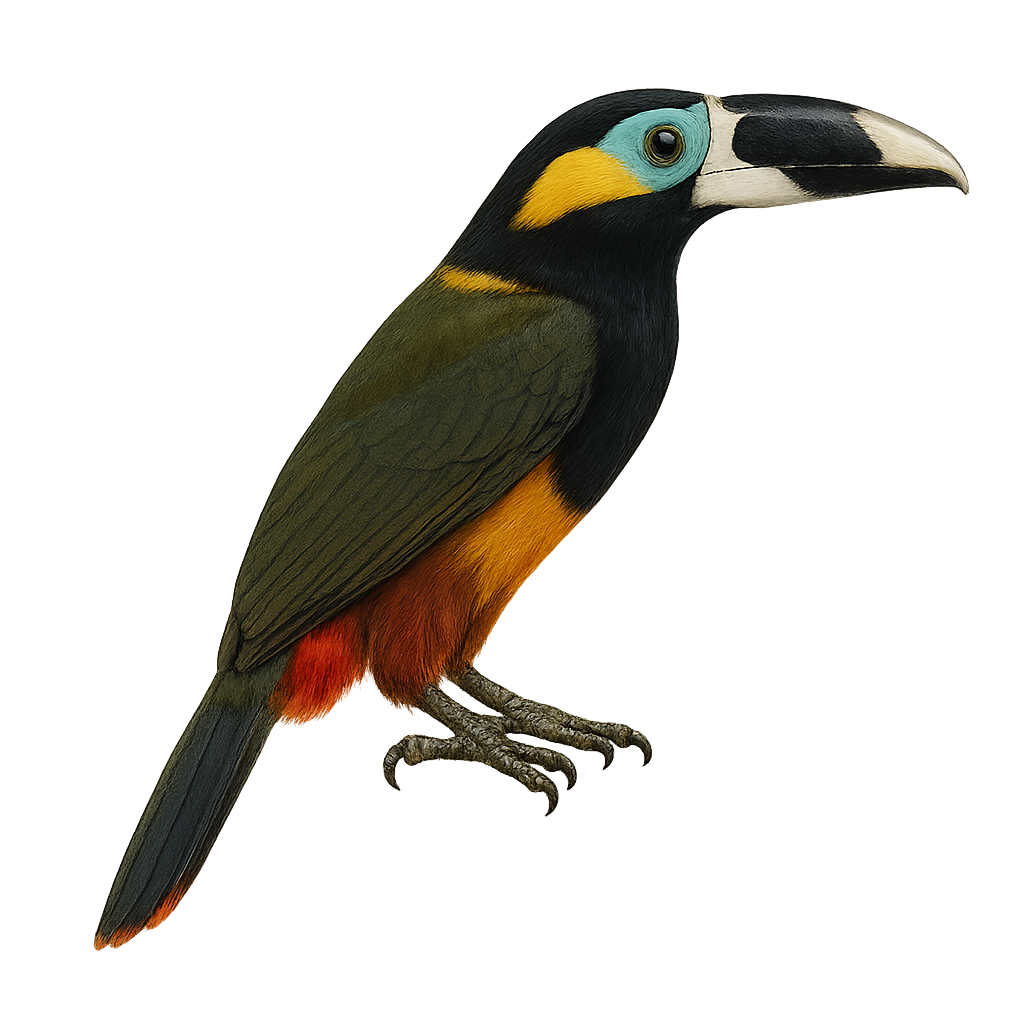Your wildlife photography guide.
Explore the gould's toucanet in detail, study its behavior, prepare your shots.
Where to observe and photograph the gould's toucanet in the wild
Learn where and when to spot the gould's toucanet in the wild, how to identify the species based on distinctive features, and what natural environments it inhabits. The WildlifePhotographer app offers tailored photography tips that reflect the gould's toucanet’s behavior, helping you capture better wildlife images. Explore the full species profile for key information including description, habitat, active periods, and approach techniques.
Gould's Toucanet
Scientific name: Selenidera gouldii

IUCN Status: Least Concern
Family: RAMPHASTIDAE
Group: Birds
Sensitivity to human approach: Suspicious
Minimum approach distance: 10 m
Courtship display: November to December
Incubation: 16-18 jours
Hatchings: November to January
Habitat:
humid tropical forests, secondary forests, forest edges
Activity period :
Primarily active during the day, with peak activity in the morning and late afternoon.
Identification and description:
The Gould's Toucanet, or Selenidera gouldii, is a colorful and fascinating bird primarily inhabiting the humid tropical forests of South America, particularly in Brazil. This small toucan is distinguished by its vibrant plumage, blending shades of green, blue, and yellow, with a characteristic banana-shaped bill. It measures about 30 to 35 cm in length and weighs between 130 and 160 grams. Arboreal, it primarily feeds on fruits but also consumes insects and small vertebrates. Its call is a mix of whistles and clicks, often heard at dawn and dusk. The Gould's Toucanet is a social bird, living in small family groups.
Recommended lens:
400mm – adjust based on distance, desired framing (portrait or habitat), and approach conditions.
Photography tips:
To photograph the Gould's Toucanet, it is advisable to use a telephoto lens of at least 400mm to capture the details of its colorful plumage without disturbing it. Look for it early in the morning or late in the afternoon when it is most active. Be patient and discreet, as this bird can be suspicious. Focus on forest edge areas where it is easier to observe. Use a tripod to stabilize your camera and get sharp images.
The WildlifePhotographer App is coming soon!
Be the first to explore the best nature spots, track rutting seasons, log your observations, and observe more wildlife.
Already 1 430 wildlife lovers subscribed worldwide

